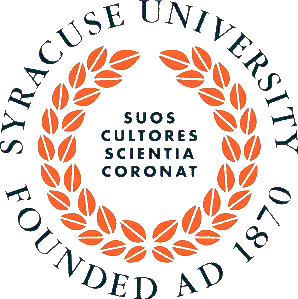The ARCS Model of Motivational Design
Part of what makes the ARCS Model so powerful is its grounding in theory and its wide application and testing worldwide. While there are a number of theories which have influenced the development of this model, the primary one is Expectancy-Value Theory.
Expectancy-value Theory, in the context of education, states that, in order for a person to be motivated, he or she must value the learning challenge AND must believe or expect that he or she can be successful at achieving that challenge.
Sometimes, young students don't believe that thinking of ways to create new/different ways of doing something is fun or personally valuable, that their ideas aren't worthy, or that, even if they have a great idea, they don't have the skills to make a great idea a reality. That is why young innovators not only need to demonstrate the skills required to be successful inventors and entrepreneurs, but they also must have the motivation to try. That's where the ARCS Model comes in.
ARCS is an acronym for the four critical components of motivating instruction: Attention, Relevance, Confidence and Satisfaction.
Attention
First, the instruction should gain and maintain the learner's ATTENTION and stimulate curiosity and interest, essential traits of an innovator. One way to do that is through incongruity or mystery. Introduce a mysterious problem that needs to be solved through innovation. This helps make the process fun, which is how many of our young innovators describe the innovation process they have undergone. Our young innovator, Nasario describes it in this way:
Oh, I really like to invent cause it's, uh, it's a fun process to, like, think about in different ways because in the end you know you're helping somebody, and that's a good feeling. I know I always feel good when I do it. And it's fun for me 'cause I like to do, like, drawing and piecing things together and stuff like that… (Inventing) enriches your mind … it's important because when you can, it helps you with pretty much every career and every path that you could go on, so… And it's also fun, so I enjoy doing it!
Sarah uses the word "passion" to describe how she would encourage other young innovators:
I would give advice to other kids who want to invent things, and the advice would be…be creative. Give it all your passion... Whatever you do, use your creativity and imagination.
Relevance
Second, the instruction should clearly describe how the learning has RELEVANCE and is important and useful for working through the innovation process. Mentoring is achieved by addressing the learning needs of the young innovator. This can be accomplished by collaborating with your mentee's classroom teacher to tie the innovation to learning standards and the general curriculum.
Relevance also can be achieved by helping your mentee understand that their idea fills an important need, as Nasario describes:
If I had to give a kid advice if they wanted to invent, I'd say invent something related to something you love 'cause that way, it won't feel as much like work. And it'll also be a lot easier. And third of all, you will stay more focused! And that'll definitely help, lots.
Another way to help your mentee see the relevance of innovation is to point out how many choices the mentee has during the process. Identifying a personally-relevant problem to solve, selecting the way he/she wants to try to solve it, choosing to work alone or with others, are just some of the decisions a young innovator must make.
Confidence
The third ARCS component, and perhaps the most important in the context of innovation, is confidence. In order to build your mentee's confidence, the task must be on an appropriate level of difficulty and challenge. That challenge must not be too difficult (high anxiety) or too easy (high boredom) so that your mentee develops CONFIDENCE in his or her own ability to learn and become a competent innovator.
As a partner, mentors help their mentee focus on their goals and unique learning needs as they go through the innovation process. It is particularly important for mentor-librarians to demonstrate flexibility and openness to new ideas (and not be judgmental) when mentoring young innovators because innovation requires out-of-the-box thinking and generating lots of ideas before honing in on one or two of those ideas.
When mentor-librarians create a safe learning environment based on a mutual trust between mentor-librarian and mentee-young innovator, the mentee will feel free to try out new ideas and experiment with prototypes and models of their ideas.
By emphasizing good listening skills, demonstrating empathy with your mentee with the challenges faced throughout the innovation process, and guiding them to reflect on that process afterwards, mentor-librarians inspire and help to build mentee's confidence and competence.
Mentor-librarians also support and encourage their young innovator mentees and are available for guidance and authentic feedback at any time throughout the process. All of this will go a long way in developing your mentee's self-confidence in his/her ability to try different approaches, overcome barriers, and deal with failure.
Our young innovator, Nasario, describes how the creation process works for him.
Well, the create process if my favorite part of it, because you're building! You might come across trial and error, but while you're doing this, you realize, you're getting better and better over time. You start to feel a rhythm and it starts to get more fun!
Another aspect of innovation that can affect or be affected by your mentee's confidence is whether to work on a creative idea individually or in a group. We asked some of our young innovators which they prefer and Nasario responded:
It kind of depends on what I'm inventing. Like, usually I like to work by myself, but if, like, I want to bounce some of my ideas off of somebody else, that, that's, um, that's a good way to work with somebody else.
Beatriz had a different perspective on this topic.
It's more fun with others because you get to communicate more, have a little more fun with it, and plus it's much better with friends 'cause you know what to do, you are communicating through it, you know what you're doing.
So, don't hesitate to suggest to a budding young innovator who may seem a bit timid working on his own to try working with a team to create an innovation. And if your mentee is happier and her style of learning is more likely to learn better working alone, encourage her to do so, with the understanding that she can always come to you for guidance and support, when needed.
Satisfaction
And finally, there should be the potential for a young innovator to feel a sense of Satisfaction for using inquiry skills, demonstrating a high level of motivation, and in achieving innovation goals. This can be done through practice, reinforcement and encouragement from you, the mentor, as well as the use of relevant, appropriate rewards. Appropriate rewards are those related to the task (e.g., being selected to represent the school at the statewide invention convention) or inherent in the task itself (e.g., overcoming a challenging barrier to create a successful business enterprise).
For young innovators, the process of innovation is almost always inherently rewarding, even if, at times, it is frustrating and includes failure experiences. In fact, if the young innovator can use failure experiences to identify more fruitful paths to innovation, that young innovator will feel a tremendous sense of satisfaction and accomplishment. Mentors need to be adept at helping these young mentees reflect on and learn from their experiences.
Our young inventor, Beatriz, finds satisfaction when she is able to create something that helps others. We asked her what was the best thing about being an inventor and she replied:
Hmm. Like, how hard you work to make, like, one little thing that you think that could help others and how it could affect your community.
Sarah finds the entire innovation process of inventing to be incredibly self-satisfying.
I just love to invent new things. I love inventing. I just think I have a lot of creativity so I can really invent a lot of new things.
Whether mentoring or planning programs, lessons and activities for young innovators, it is critical to understand that they represent the same diverse backgrounds and abilities of your school's general student population. That makes it critical that you consider Universal Design for Learning principles when mentoring.
The Innovation Destination
The Innovation Destination was designed and evaluated by a team from the Center for Digital Literacy at the School of Information Studies, Syracuse University and developed by Data Momentum Inc, in partnership with the Connecticut Invention Convention, By Kids for Kids, New York On Tech, and over 70 school librarians and young innovators.
This site has been serving the youth invention community from 2015 - present.




